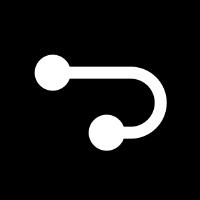Agentic AI Comparison:
AgentGPT vs Asana AI
Introduction
This report provides a comprehensive comparison of AgentGPT and Asana AI based on key metrics: autonomy, ease of use, flexibility, cost, and popularity. The goal is to offer a balanced analysis to guide users in selecting the most suitable AI agent platform for their workflow or project management needs.
Overview
Asana AI
Asana AI is the artificial intelligence suite built into Asana’s renowned project management platform. Leveraging its no-code AI Studio, Asana AI enables teams to design, embed, and customize AI agents for workflow automation, task prioritization, and project planning directly within the familiar Asana environment.
AgentGPT
AgentGPT is a browser-based agentic AI platform focused on letting users create, deploy, and chain autonomous AI agents to achieve complex goals. It is designed for custom agent creation without requiring significant technical expertise, and caters to users seeking innovative AI-driven automation across diverse tasks.
Metrics Comparison
autonomy
AgentGPT: 9
AgentGPT is built around chaining and deploying fully autonomous agents capable of executing complex goals with minimal human intervention. Users can assign high-level objectives, and the agent figures out the necessary steps and actions autonomously.
Asana AI: 7
Asana AI agents offer substantial autonomy in their ability to predict roadblocks, prioritize tasks, and generate detailed project plans based on high-level inputs. However, they operate within Asana’s workflow structures, typically supporting rather than replacing human oversight at each stage.
AgentGPT is more focused on pure agentic autonomy, while Asana AI balances autonomy with human-in-the-loop design for project management scenarios.
ease of use
AgentGPT: 7
AgentGPT is designed to be accessible with a no-code interface, but its complexity in setting up agent chains and defining tasks may present a learning curve for users unfamiliar with agentic workflows.
Asana AI: 9
Asana AI’s no-code builder (AI Studio) is specifically designed for ease of use by non-technical teams, allowing any user to embed AI agents into workflows via a familiar interface without scripting or technical setup.
Asana AI is explicitly geared toward usability for a wide range of users; AgentGPT, while no-code, may demand more conceptual learning.
flexibility
AgentGPT: 8
AgentGPT excels in flexibility, supporting diverse tasks across business, research, and creative domains through user-defined goals and custom agent architectures.
Asana AI: 8
Asana AI offers high flexibility within the context of project and workflow management. Its AI Studio allows teams from different departments—marketing, operations, IT, HR—to tailor AI agents to their needs, automate multi-stage workflows, and customize agent behavior with contextual information.
Both platforms are highly flexible, but AgentGPT’s flexibility is more general-purpose, while Asana AI’s is deeply integrated into project management contexts.
cost
AgentGPT: 7
As of 2025, AgentGPT offers free and paid tiers, with advanced features and higher agent capacity available at premium pricing. Costs are generally competitive among AI agent platforms, but may be higher for heavy or enterprise-grade usage.
Asana AI: 6
Asana AI features are available within Asana’s premium plans. Asana’s cost structure typically involves per-user licensing with additional costs for advanced AI features, making it potentially more expensive for large teams or organizations.
Both charge for advanced features, but AgentGPT may be more affordable for individual or small team use, while Asana AI’s cost scales with team size and feature depth.
popularity
AgentGPT: 7
AgentGPT has achieved significant popularity among AI and automation enthusiasts, especially for experimental and agentic AI tasks, but it is less mainstream compared to established workflow solutions.
Asana AI: 9
Asana, as a leading project management platform, enjoys widespread adoption among businesses globally. The integration of AI features has further increased its popularity, making Asana AI one of the most recognized AI-augmented productivity tools available.
Asana AI, benefiting from Asana’s established user base, enjoys broader mainstream popularity, while AgentGPT is a niche leader in the agentic AI community.
Conclusions
AgentGPT is best suited for users seeking high-autonomy, general-purpose AI agents capable of complex, multi-step task execution across varied domains, especially where user-defined customization and chaining are required. Asana AI, on the other hand, is ideal for teams needing seamless AI-driven automation within project management workflows, prioritizing ease of use, deep integration, and mainstream popularity. Organizations should consider their primary needs—general automation versus workflow-centric productivity—and the existing software ecosystem before choosing between the two platforms.

